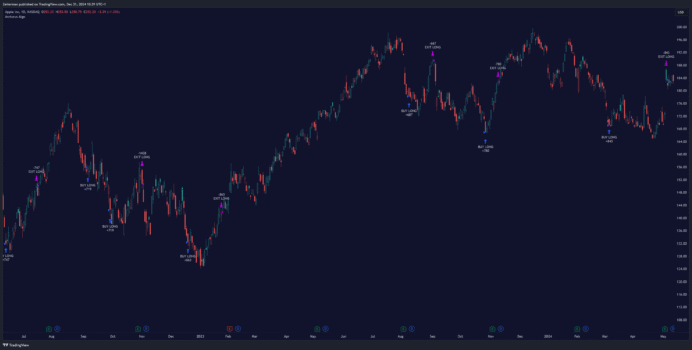Sector Rotation: How to Identify the Next Hot Industry
Introduction
In the dynamic world of investing, timing isn’t just about when to buy or sell individual stocks—it’s also about knowing which sectors to focus on at different phases of the economic cycle. Sector rotation is a powerful investment strategy that can help you stay ahead of market trends and maximize returns by identifying which industries are poised for growth.
Understanding sector rotation patterns can mean the difference between riding a wave of prosperity and getting caught in a downturn. This comprehensive guide will teach you how to spot emerging opportunities, understand cyclical trends, and position your portfolio for success.
What is Sector Rotation?
Sector rotation refers to the movement of investment capital from one industry sector to another as economic conditions change throughout different phases of the business cycle. Smart investors and fund managers use this strategy to capitalize on sectors that historically outperform during specific economic periods.
The concept is based on the principle that different sectors respond differently to economic conditions. While technology stocks might thrive during economic expansion, defensive sectors like utilities and consumer staples often perform better during recessions.
Key Benefits of Sector Rotation Strategy
- Enhanced Returns: Capture growth in outperforming sectors
- Risk Management: Reduce exposure to declining industries
- Market Timing: Align investments with economic cycles
- Diversification: Spread risk across different sectors
Understanding Economic Cycles and Sector Performance
The Four Phases of Economic Cycles
- Recovery Phase
- Duration: 6-18 months
- Characteristics: GDP growth begins, unemployment peaks
- Top Performing Sectors: Technology, Consumer Discretionary, Financials
- Why: These sectors benefit from increased consumer spending and business investment
- Expansion Phase
- Peak Phase
- Contraction Phase
- Duration: 6-18 months
- Characteristics: Negative GDP growth, rising unemployment
- Top Performing Sectors: Healthcare, Consumer Staples, Utilities
- Why: These defensive sectors provide stable earnings during downturns
How to Identify Emerging Sector Opportunities
- Monitor Economic Indicators
- GDP growth rates and forecasts
- Employment data and job creation numbers
- Interest rate trends and Federal Reserve policies
- Inflation rates and commodity prices
- Consumer confidence index
- Manufacturing PMI (Purchasing Managers’ Index)
- Analyze Sector-Specific Metrics
Technology Sector Signals:
- R&D spending increases
- Patent applications growth
- Venture capital investments
- Digital transformation trends
Healthcare Sector Indicators:
- Aging population demographics
- Drug approval pipelines
- Healthcare spending as % of GDP
- Breakthrough medical technologies
Energy Sector Catalysts:
- Oil price trends
- Renewable energy adoption
- Energy policy changes
- Infrastructure investments
- Technical Analysis for Sector Rotation
Relative Strength Analysis:
- Compare sector ETF performance against S&P 500
- Look for sectors breaking above resistance levels
- Monitor sector rotation momentum indicators
Volume Analysis:
- Increasing volume in sector ETFs indicates institutional interest
- Monitor options activity for sector-specific plays
- Track insider buying/selling in sector leaders
Tools and Resources for Sector Analysis
Free Resources:
- FRED Economic Data
- Yahoo Finance sector performance
- Google Trends for industry search volume
- SEC EDGAR database for company filings
Premium Tools:
- Bloomberg Terminal sector analysis
- FactSet sector rotation models
- Morningstar research
- S&P Capital IQ industry data
Current Market Trends and Opportunities (2025)
Emerging Sectors to Watch
- Artificial Intelligence and Machine Learning
- Market drivers: Automation adoption, productivity gains
- Key players: Cloud computing, semiconductor companies
- Growth catalysts: Enterprise AI adoption, edge computing
- Clean Energy and ESG Investing
- Market drivers: Climate change policies, cost reductions
- Key players: Solar, wind, battery technology companies
- Growth catalysts: Government incentives, corporate sustainability goals
- Cybersecurity
- Market drivers: Increasing digital threats, remote work trends
- Key players: Cloud security, identity management firms
- Growth catalysts: Regulatory compliance, data protection needs
- Biotechnology and Personalized Medicine
- Market drivers: Aging population, precision medicine advances
- Key players: Gene therapy, diagnostic companies
- Growth catalysts: FDA approvals, breakthrough treatments
Building Your Sector Rotation Strategy
Step 1: Assess the current economic phase
Step 2: Identify Target Sectors
Step 3: Research Individual Companies
Step 4: Implement Gradually
Step 5: Monitor and Adjust
Risk Management in Sector Rotation
- Avoid over-concentration risk
- Be careful of timing mistakes
- Don’t ignore fundamentals
Conclusion
Sector rotation is a sophisticated investment strategy that requires patience, research, and discipline. By understanding economic cycles, monitoring key indicators, and staying informed about emerging trends, you can position your portfolio to benefit from the next hot industry.
The key to success lies in staying informed, remaining flexible, and maintaining a long-term perspective while capitalizing on shorter-term cyclical opportunities.
Whether you’re a beginner investor or an experienced portfolio manager, incorporating sector rotation principles into your investment strategy can help you achieve better risk-adjusted returns and stay ahead of market trends.







